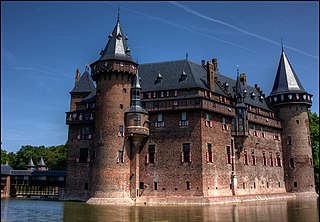
Haarzuilens is a village in the Dutch province of Utrecht. It is a part of the municipality of Utrecht, and lies about 12 km west from the city centre of Utrecht. It was a separate municipality until 1954, when it was joined to the municipality of Vleuten.
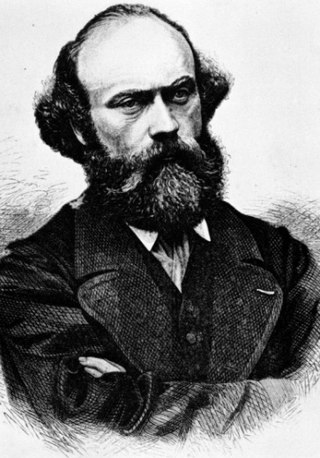
Petrus Josephus Hubertus "Pierre" Cuypers was a Dutch architect. His name is most frequently associated with the Amsterdam Central Station (1881–1889) and the Rijksmuseum (1876–1885), both in Amsterdam. More representative for his oeuvre, however, are numerous churches, of which he designed more than 100. Moreover, he restored many monuments.
Édouard Étienne Alphonse de Rothschild is a businessman and part of the French branch of the Rothschild family.

Tuyll is the name of a noble Dutch family, with familial and historical links to England, whose full name is Van Tuyll van Serooskerken. Several knights, members of various courts, literary figures, generals, ambassadors, statesmen and explorers carried the family name.
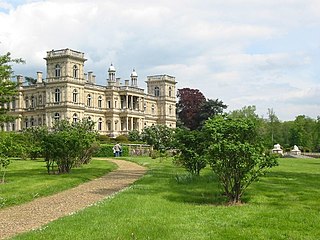
Château de Ferrières is a French château built between 1855 and 1859 for Baron James de Rothschild in the Goût Rothschild style located in central France, some 26 km east of Paris. Rothschild ownership of the Château de Ferrières was passed down through the male line according to the rule of primogeniture, until it was donated by the family in 1975 to the University of Paris. Considered to be the largest and most luxurious 19th-century château in France, it can be reached from Rue Rucherie in the town of Ferrières-en-Brie in the Seine-et-Marne department.

Marie-Hélène Naila Stephanie Josina de Rothschild was a French socialite who became a doyenne of Parisian high-society and was a member of the prominent Rothschild banking family of France.
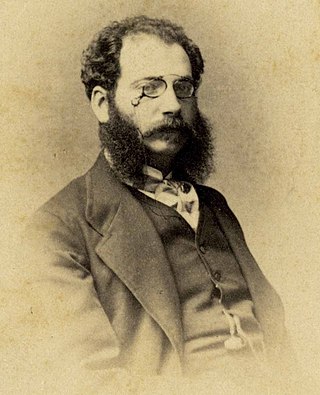
Salomon James de Rothschild (1835–1864) was a French banker and socialite.
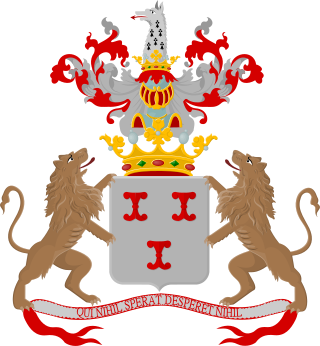
Van Zuylen van Nijevelt (Dutch pronunciation: [vɑn ˈzœylə vɑn ˈnɛivɛlt] is a noble family from the region of Rotterdam, town and region where several members of the family played a significant role. The head of the family is the Count van Zuylen van Nijevelt; the rest of the family bears the title baron or baroness. This family must not be confused with the old noble family from Utrecht, Van Zuylen van Nievelt.
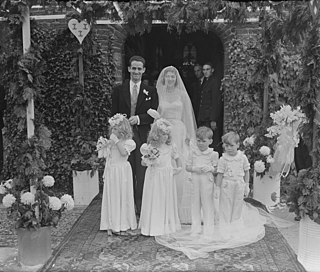
Count François de Nicolay was a member of the House of Nicolay in France who was a farm manager, arboriculturist, and a politician who was elected to the Senate of France.

Castle Duurstede is a medieval castle in Wijk bij Duurstede in the province of Utrecht in the Netherlands.
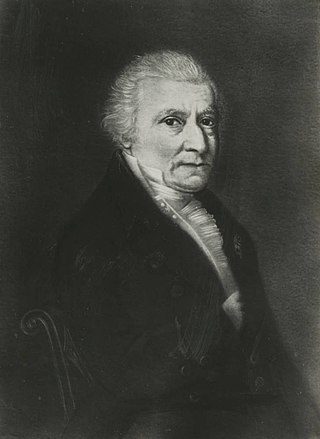
PhilipJulius van Zuylen van Nijevelt was a Dutch general, nobleman and politician. He was appointed Marshal of Holland in the Kingdom of Holland and served as French senator following the annexation of Holland by the Napoleonic Empire. Van Zuylen van Nijevelt was also an amateur scientist and became known for his treatise on chess.

Pieter Hendrik van Zuylen van Nijevelt was a Dutch count and baron who served as a general in the French and Dutch armies during the Napoleonic era and later. He was present at the Battle of Waterloo in 1815 as chief of staff of the 2nd Dutch Division.
The Rothschild family is a European family of German Jewish origin that established European banking and finance houses from the late eighteenth century.

Van Zuylen van Nievelt is an old noble Dutch family originating from Utrecht.

Baroness Hélène van Zuylen van Nijevelt van de Haar or Hélène de Zuylen de Nyevelt de Haar, née de Rothschild was a French author and a member of the prominent Rothschild banking family. She collaborated on stories and poems with her lesbian partner Renée Vivien, sometimes under the pen name Paule Riversdale. An only child, the daughter of Salomon James de Rothschild, she was disinherited by her mother for marrying a Catholic, Baron Etienne van Zuylen of the old Dutch noble family Van Zuylen van Nievelt.

Cannenburg Castle or Cannenburch Castle is a watercastle in the Netherlands. It is situated in Vaassen, a town in the province of Gelderland.
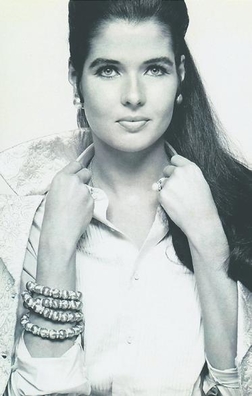
Baroness Gabriëlle Andrée van Zuylen van Nyevelt van de Haar was a French landscape architect, garden designer, garden writer and a member of the International Best Dressed Hall of Fame List since 1978. "Baroness Gabrielle van Zuylen personifies the charm and elegance", according to the French magazine L'ŒIL.

Hackfort Castle is a castle in Vorden, in the Dutch province of Gelderland. The castle is owned by the Vereniging Natuurmonumenten, the Society for Preservation of Nature Monuments.

Étienne Gustave Frédéric, 3rd Baron van Zuylen van Nyevelt van de Haar, was a Dutch-Belgian banker, businessman, philanthropist, equestrian and car enthusiast. He was a founding member of the Automobile Club de France, serving as the organisation's first president, and was the first president of the Association Internationale des Automobile Clubs Reconnus.

Hillenraad Castle is a 14th century square water castle located on the south side of Swalmen in the municipality of Roermond in the province of Limburg. The castle is located in the middle of an estate near the village of Boukoul. It consists of a moated main building with four corner towers, an outer castle, several outbuildings and a castle park. Hillenraad Castle has been a protected national monument since 1970. The entire complex consists of twenty separate entries in the national monument register, including the main building, the outbuildings and a number of elements in the park. The castle is not open to the public.
































